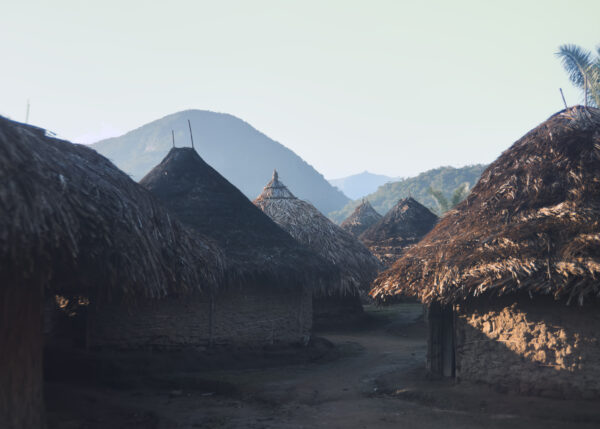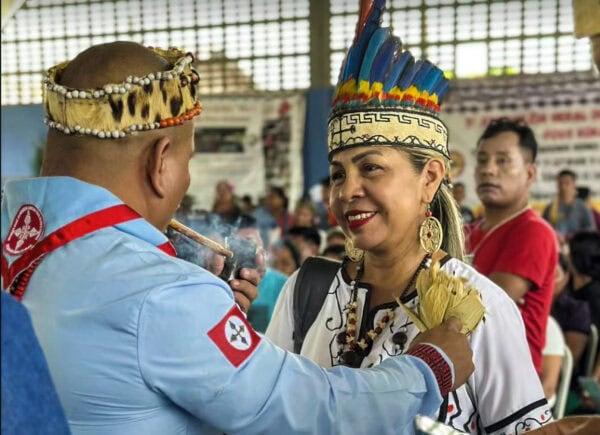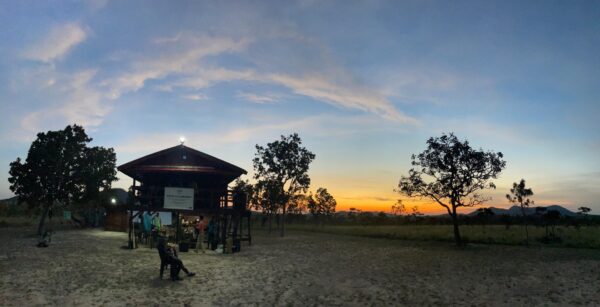April 8, 2022, by María Paula Lizarazo, original article published in El Espectador
In 2020, in Colombia, the department of Caquetá was the second most deforested, a problem generated by extensive cattle ranching and the production of crops for illicit use. The following shows how some families in the region are changing their economy, while helping to protect the Alto Fragua Indi Wasi National Park.
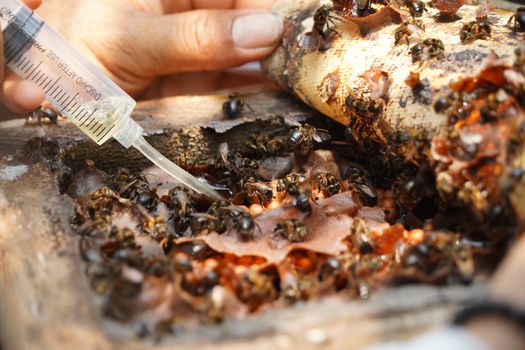
The first time G.* saw a coca plant, he was eight years old. His father was the first to show him the seeds that would be part of his life for years. When he was 18, he planted his first quarter of a hectare. “Right now, I’m 47 years old, and I don’t want to know anything about coca,” he says from his farm in the El Prado village, three or four hours from Florencia by car, where he lives with his wife and three of his daughters. He planted coca for 10 years, until, in his own words, he realized that he was taking very big risks. G. planted it, processed it and marketed within the municipality of Belén de los Andaquíes. If no one bought from him there, then he would go to Florencia. But in 2005 he stopped doing it, and for good.
“I had a few grams of coca that I wrapped in banana bunches. I was going to Florencia, and I told the woman to wrap the grams of coca in a certain way. But it turns out that there was a police and army checkpoint on the highway, and they stopped us all to examine bundles of bananas and cassava.” That time, the Army found nothing on him, but it was enough for G. to tell his wife that he was leaving his spot free for others to sell coca. He dispensed with the coca bushes and began to subsist by planting pasture grass and growing bananas. “The five children I have had, I have raised without the need for coca.”
In 2021, the source of his income changed. Within the 11 hectares of his farm, he has a space in which he raises 21 hives of Melipona bees. Meliponas are stingless bees that live in tropical ecosystems, from Argentina to Mexico. To produce a milligram of honey, approximately a thousand flowers are needed, so “it is a titanic task that bees carry out to produce an ounce of honey,” says biologist Daniel Villamil, who is part of the Amazon Conservation Team (ACT) in Colombia, and guides and assists 60 families in Caquetá who are starting to breed bees.
The one who gave G. the idea of breeding bees was Ubency, a farmer who has lived in the Los Angeles village community for five years, along with his wife and his daughters, and who is also part of ACT. Every day, he checks the trees on his farm, and when he sees them blooming or bearing new fruit, he knows why. “I did not know what function the bees fulfilled–I did not pay attention to them, and I did not know that without pollination there would be no fruits.” He grew up watching his parents and his neighbors extract honey from the hives they found in the mountains and throw the hives away. Today, on the other hand, he welcomes the boys and girls from the village school into his house and teaches them the importance of caring for the forest to protect the bees. “If one of my daughters sees me knocking down a tree on the edge of the stream, she will do the same,” he says.
G. remembers that at the beginning of last year, “Ubency came and told me that we should obtain some bees, that this would be useful for conservation” and that there would be a market for honey. His goal, by the end of this year, is to have 50 hives. Why 50? “Because having 50 beehives is like having three cows.”
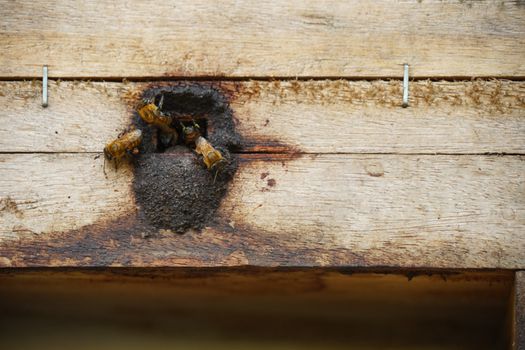
Buffer Zones
G.’s farm and Ubency’s farm are in what are known as buffer zones, that is, areas bordering conservation areas that support protection. Both farms are in buffer zones of the Alto Fragua Indi Wasi National Park, in the Eastern Andean mountain range. The deforestation that is conducted around it, for example, affects the sources of water in the Park.
Carolina Gil, director of the ACT’s Northwest Amazon Program, states that the concept of conservation is more than having protected areas. “When we are talking about the comprehensive protection of a territory, it is not only that people have water, but that other species that depend on that forest are also very important, and we should honor these species. And the Melipona bees are a key indicator of the health of that territory.”
One of the important points of conservation, for Gil, is that the communities be integrated into the activities carried out to protect the ecosystem. She states that if meliponiculture results in bringing surpluses to the family economy, people will begin to have a different relationship with the environment, seeing that “it is not necessary to cut down all the trees” and that there are other less problematic subsistence options.
What the families that now breed Melipona bees did not normally do was attack, burn or remove the bee nests that they found on their farms or in the trees they felled, in part because they believed the bees had stingers. That is why Villamil adds that “by giving people real opportunities, it ensures us that instead of generating pressure on the Park, they help reduce the impacts of other activities.”
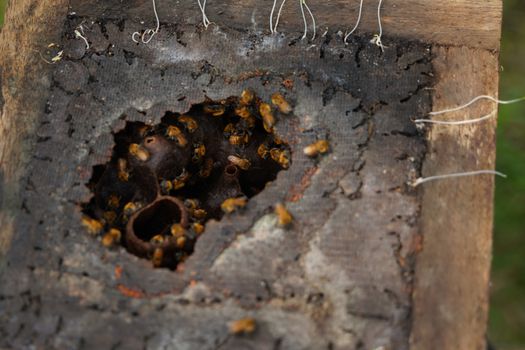
Rebuilding the social fabric
G. has been offered the opportunity to replant coca plants on his farm, but he says he knows that many people are killed because of coca, that “armed groups threaten the growers” and fight over the market, the planting and the production. He says that if armed groups arrive in the region, “it is better not to have coca”, in order to avoid entering into these disputes. And he adds that even if he were to do it again, maybe the next day the government “gives the order to stop cultivating coca, a plane comes, and who is impacted? So we’re good for now.”
Villamil says that the Amazon is “very threatened by the current production model, which focuses on extensive cattle ranching and the production of crops for illicit use.” In 2020, Caquetá was the second most deforested department in Colombia. Of the 170,000 hectares that were deforested that year, 70% was concentrated in the departments of Meta, Caquetá, Guaviare, Putumayo and Antioquia. In addition, the expansion of the agricultural frontier in the department covers some 16% of the land, a percentage that appears to increase day by day.
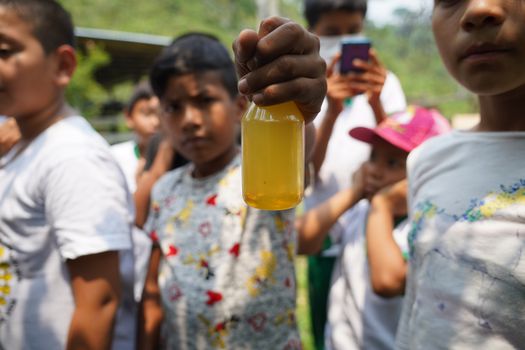
These forms of production are problematic at the ecosystem level because, says Villamil, “in the Amazon, the soil is not suited for agriculture or raising livestock. the soil is not really as productive as in other areas, and it has a very large ecological impact. Other models such as agroforestry, including the breeding of species such as native bees, may have a very significant positive impact on the economies of the communities, in addition to preserving the environment.”
Gil and Villamil agree that agroforestry projects, such as meliponiculture or cacay, cacao and forest fruit planting, in addition to serving as both an economic alternative for communities and a form of environmental conservation, lead to social strengthening, because they are activities in which children and families can participate, ones that begin to ensure food security in these foothill areas.
*The name of the source has been changed to protect the individual’s identity.
*This article is published as a partnership between El Espectador and InfoAmazonia, with the support of the Amazon Conservation Team.
Share this post
Bring awareness to our projects and mission by sharing this post with your friends.


